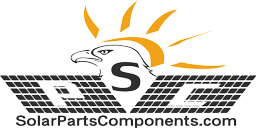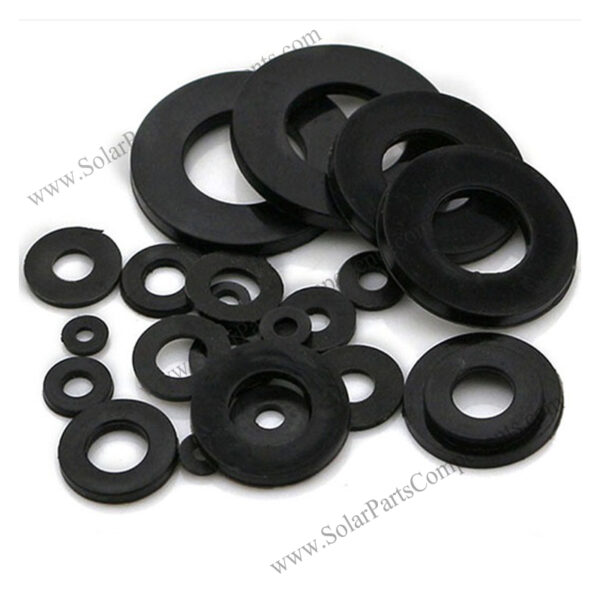EPDM Rubber Pads in Solar Installations: Core Applications & Key Advantages
In the solar energy industry, installation systems face relentless exposure to harsh outdoor conditions—extreme temperatures, intense UV radiation, heavy rainfall, and persistent mechanical vibration. These factors make material durability and performance critical, as they directly influence the lifespan and energy efficiency of solar arrays. Among the essential components supporting reliable solar operations, EPDM (Ethylene Propylene Diene Monomer) rubber pads stand out. Their unique blend of weather resistance, chemical stability, and protective capabilities has established them as a non-negotiable part of modern solar installations. Below is a detailed breakdown of their core applications and advantages in solar systems.
1. Core Application 1: Solar Panel Frame Cushioning & Protection
Solar panels rely on aluminum or steel frames for structural support, which are then secured to racking systems. However, direct contact between the panel frame and racking creates two significant risks:
Scratching of the frame’s anti-corrosion coating, which can lead to rust formation or material degradation over time.
Vibration-induced wear, caused by wind gusts or thermal expansion/contraction (common in outdoor environments), which weakens both the frame and racking.
EPDM rubber pads resolve these issues by acting as a robust yet flexible buffer layer between the panel frame and racking. Their soft, resilient texture delivers three key benefits:
Eliminates direct metal-to-metal contact, effectively preventing scratches on the frame’s surface and preserving its anti-corrosion integrity.
Absorbs micro-vibrations from wind or temperature fluctuations, significantly reducing long-term wear on both the frame and racking components.
Maintains consistent flexibility across extreme temperature ranges (from -40°C to 150°C), ensuring reliable cushioning performance in diverse settings—whether in hot desert solar farms or cold high-altitude installations.
2. Core Application 2: Racking System Footing Protection (Roof & Ground Installations)
Solar racking systems—whether installed on rooftops or ground—must balance two priorities: protecting the underlying surface and maintaining structural stability. Each installation type faces unique challenges:
Roof installations: Metal racking feet can puncture or tear roof membranes (e.g., TPO, EPDM roofing) if in direct contact, leading to costly roof leaks and water damage.
Ground installations: Racking feet placed on concrete or gravel may shift over time due to thermal expansion, soil settlement, or heavy rainfall, compromising the array’s alignment.
EPDM rubber pads serve as specialized footing protectors to address these challenges, with tailored benefits for each installation type:
For roof systems: Thick (3–5mm) EPDM pads distribute the racking’s weight evenly across the roof membrane. This prevents concentrated point pressure that would otherwise damage the membrane. Additionally, they adhere securely to both metal racking and roof surfaces, eliminating slippage even in high-wind conditions.
For ground systems: EPDM pads with anti-slip textures (e.g., raised patterns) boost friction between the racking foot and concrete/gravel, minimizing shifting. They also resist corrosive soil chemicals—such as fertilizers or road salts—protecting metal racking feet from rust and degradation.
Key Advantages of EPDM Rubber Pads Over Alternatives in Solar Systems
Solar installations require materials that match the 25+ year lifespan of solar panels—and EPDM rubber pads outperform common alternatives like neoprene, silicone, or plastic in three critical ways:
Superior UV and weather resistance: Unlike neoprene (which hardens or cracks after 2–3 years of UV exposure) or plastic (which becomes brittle), EPDM retains its properties for a decade or more, even under intense sunlight.
Cost-effectiveness for large-scale use: Silicone pads offer good performance but are prohibitively expensive for bulk solar projects. EPDM provides comparable durability at a fraction of the cost, making it ideal for large arrays.
Broad chemical and temperature tolerance: EPDM resists soil chemicals, rain, and extreme temperatures (-40°C to 150°C), whereas neoprene is susceptible to oil/chemical damage and plastic fails in high heat.
Conclusion
While EPDM rubber pads may seem like a “small component” in solar installation systems, their role is irreplaceable. They protect panels from wear, prevent costly roof leaks, reduce vibration-related damage, and extend the overall lifespan of the array. For solar project developers and installers, investing in high-quality EPDM pads is a strategic choice: it avoids expensive maintenance (such as roof repairs or inverter replacements) and ensures the solar array operates efficiently for its full 25+ year lifespan. In short, EPDM rubber pads are a cost-effective solution that underpins the long-term reliability of solar energy systems.
Get in touch today:
– Email: info@solarpartscomponents.com
– Phone: +86 183 5926 0008
– Website: Visit https://www.solarpartscomponents.com/
to request a quote or sample.
Don’t compromise on the stability and durability of your solar system—invest in a high-quality rubber pad for solar panel today!










